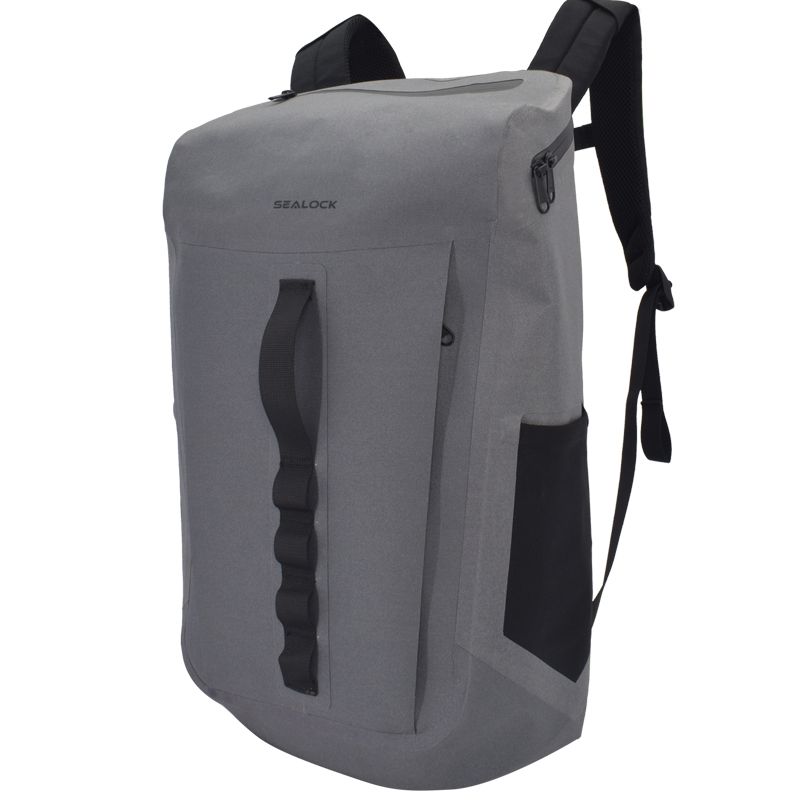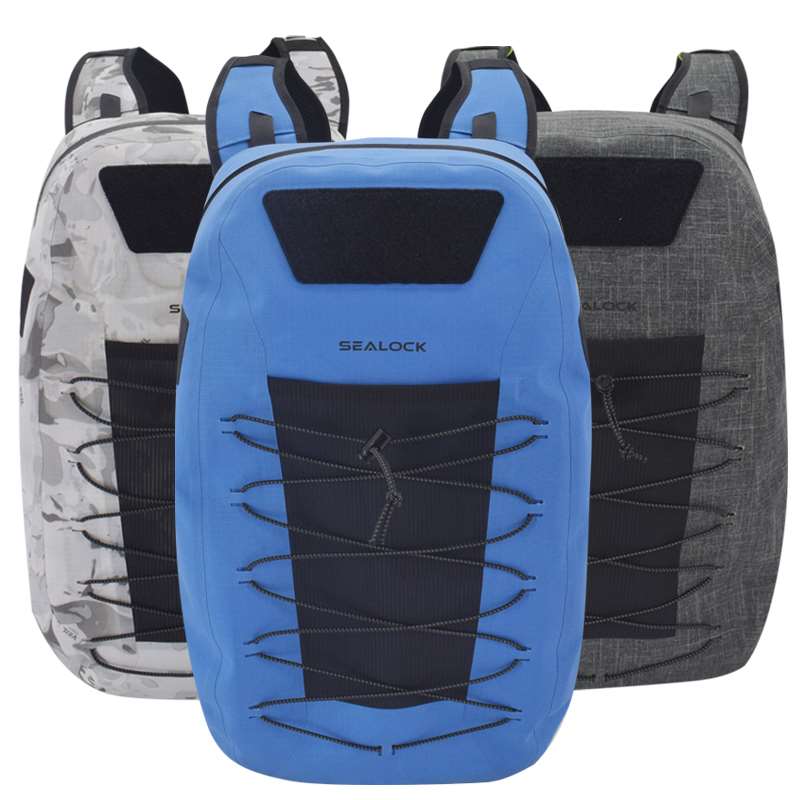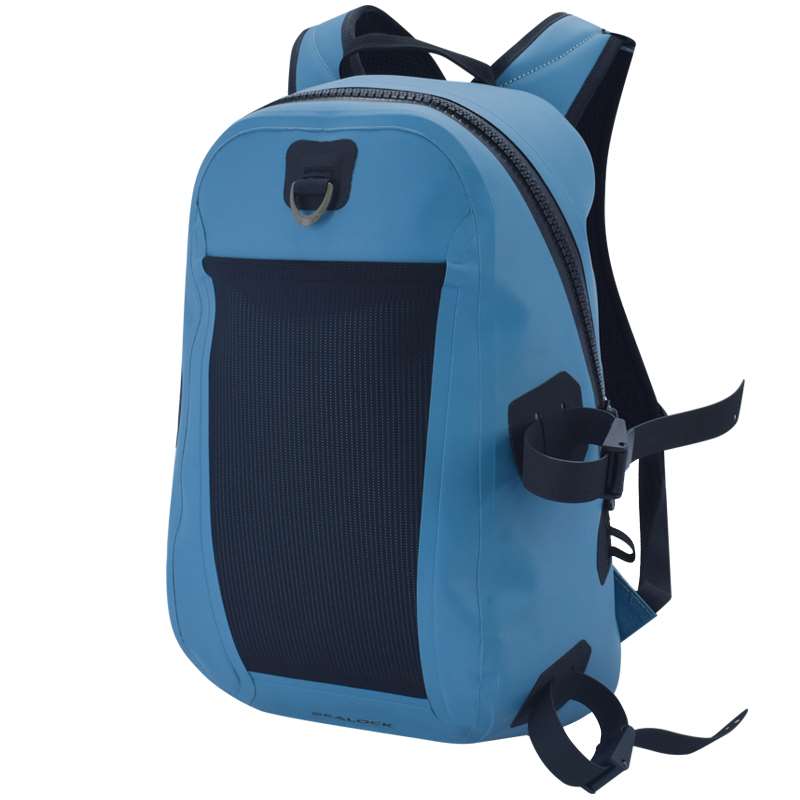When you choose a route, the first rule is to stay on it. When you get lost, you can use a map and compass to find your way back, or, if you have to, find a new path.
First, you need to relate the map to the geography around you. You can look for landmarks around you, like mountains, lakes or rivers. Then, try to find the landmarks on the map. Assuming you know where you're heading, it shouldn't take long to get the map in the right direction. Spread the map out flat in front of you, and Orient yourself until you can bring the actual objects around you to the map. On the corresponding reference completely corresponding. Two contour lines close together on the map indicate steep terrain, and by checking the contour lines and other markers on the map, you can quickly get your bearings.
1. Suppose you're heading for the distant mountain. Take out your compass and point your forward arrow in the direction of the mountain.
Wait for the small magnetic needle to stop swinging.
3. Adjust the direction of the dial (also known as the panel) until the small magnetic needle coincides with the line pointing north. I'm setting the direction of the coordinates. If you make sure that the little magnetic needle always points north and keeps going in the direction the needle points, eventually you will reach the distant mountain. Even better, even if you're walking on a trail surrounded by trees that can't see the mountains beyond, you'll know if you're on the right path.
On the North Pole
There are actually two north poles, one of which is the magnetic pole of your compass and the other is the geographical direction of your map, and the magnetic deviation Angle between them may be 30. So much. The actual deviation will be shown by the positive or negative magnetic declination Angle on the map. For example, if you set your compass 90 in front of you, but your map shows a magnetic declination of 1 to 100 between you and the compass, then it's true. Your forward direction should be set to 800. To get the direction right, you need to set the compass to 1,000, and even a tiny deviation in Angle will take you miles away from your original goal.
Let the map do your navigation
There is a situation where you can find your destination on a map but not in the real world. This may be because your destination is temporarily obscured by the surrounding fog, or it may be because the night has darkened everything, or it may be because the mountains ahead are blocking your view. As long as you know where you are and where you are on the map, you can safely use the map and compass to show you the way, even if you can't see your landmarks in the real world for the time being.
1. Imagine a straight line connecting your current location to your destination. Put the compass on the map and let them work together.
2. Rotate the shell of the compass until the north indicated by the compass matches the north on the map (north is usually marked above the map).
3. Remove the compass from the map and adjust the direction until the small magnetic needle coincides with the north mark on the compass case. The forward arrow will tell you which way to go.
Map scale
There are several common map scales for hiking.
One centimeter on a map is 250 meters in real life (this is the most commonly used jungle walking map).
1:50, 000- 1 cm on a map is 500 m in real life (this is the most commonly used walking map). If you are planning a long trip, you may need to use the following scale map.
1:50000-1 cm on a map is 500 m in real life.
1:100,000-1 cm on the map is 1 km in real life.
The smaller the number after the mark, the more detailed the map. Use a 1:50,000 or 1:10,000 scale map to give you a global view of the journey, and prepare several 1:25,000 scale maps to give you a sense of the details of the journey.
 English
English  Español
Español  Português
Português  русский
русский  Français
Français  日本語
日本語  Deutsch
Deutsch  tiếng Việt
tiếng Việt  Italiano
Italiano  Nederlands
Nederlands  ภาษาไทย
ภาษาไทย  Polski
Polski  Svenska
Svenska  magyar
magyar  Malay
Malay  বাংলা ভাষার
বাংলা ভাষার  Dansk
Dansk  Suomi
Suomi  हिन्दी
हिन्दी  Pilipino
Pilipino  한국어
한국어  Türkçe
Türkçe  Gaeilge
Gaeilge  العربية
العربية  Indonesia
Indonesia  Norsk
Norsk  تمل
تمل  český
český  ελληνικά
ελληνικά  український
український  Javanese
Javanese  فارسی
فارسی  தமிழ்
தமிழ்  తెలుగు
తెలుగు  नेपाली
नेपाली  Burmese
Burmese  български
български  ລາວ
ລາວ  Latine
Latine  Қазақша
Қазақша  Euskal
Euskal  Azərbaycan
Azərbaycan  Slovenský jazyk
Slovenský jazyk  Македонски
Македонски  Lietuvos
Lietuvos  Eesti Keel
Eesti Keel  Română
Română  Slovenski
Slovenski  मराठी
मराठी  Srpski језик
Srpski језик 




